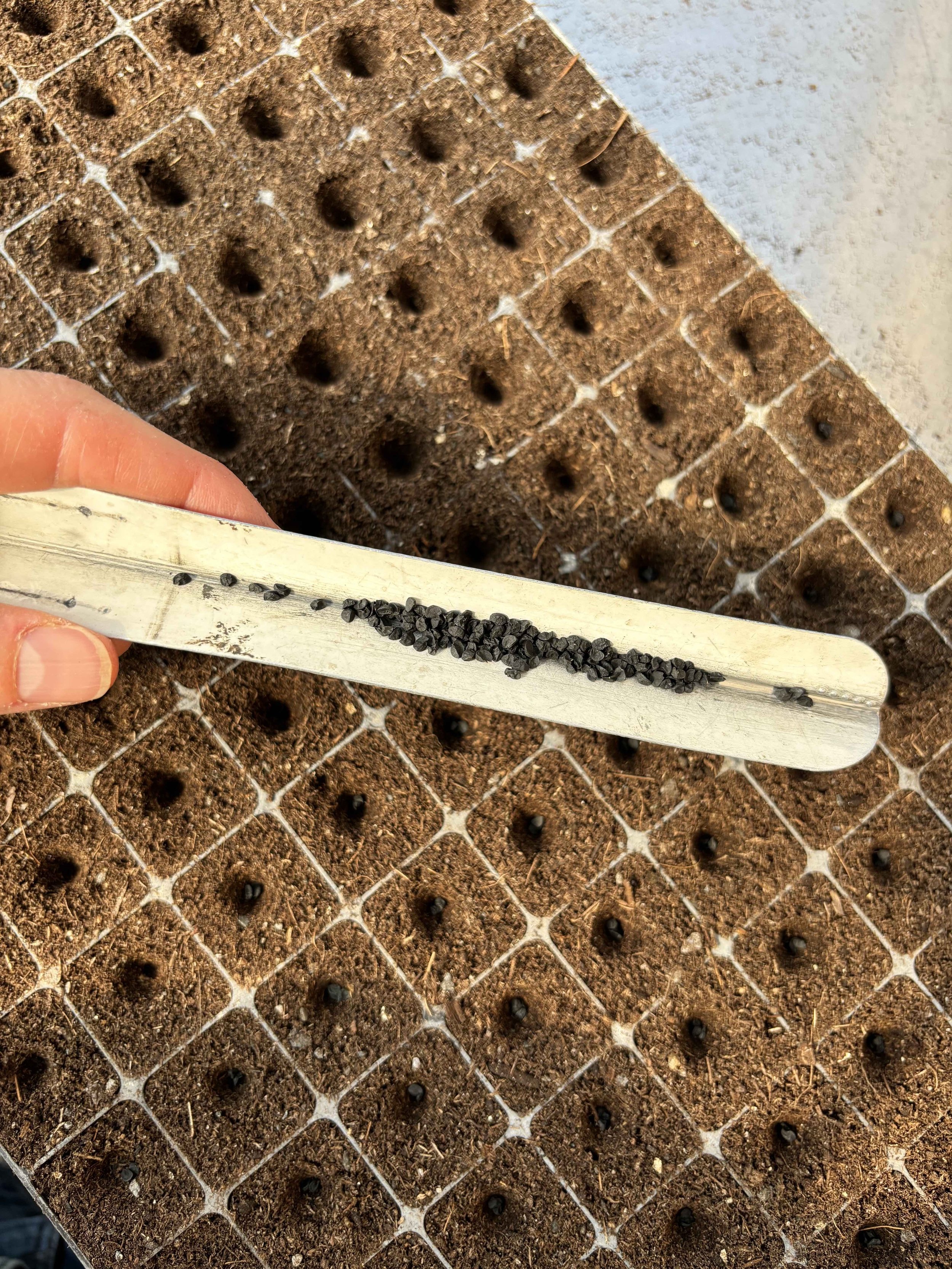It's hard to believe that we're just 10 weeks out from the start of our CSAdeliveries. Our greenhouse seedlings are growing rapidly this time of year and we'll be transplanting the first round out into the fields in a few weeks. Thank you to everyone who has joined our CSA so far. We still have some spots available at our pick-up locations across Long Island, so it's not too late to get your share of the bounty of the season!
THIS IS HOW IT BEGINS...
Many of the crops we grow begin their journey to your table by being planted into soil inside our greenhouse. The seeds germinate and the plants grow up to become "seedlings" before we move them to their final growing spot outside in the field. This time of year we're seeding everything from lettuce to fennel, leeks, kales, onions and something new for us and our CSA members...celery!
All of the seeds we purchase are Certified Organic and non-GMO. We choose varieties for flavor and for what grows best in our climate. Our favorite seed companies include High Mowing Organic Seeds & Johnny's Selected Seeds.
Here's the family crew seeding flats of lettuces for the early season CSA boxes. Yes, the boys are all grown up now and show varying levels of enthusiasm for farm work. On this particular day, they were in top form working well as a team filling flats and seeding with the vacuum seeder.
We purchase a custom mix of organic greenhouse soil from Vermont Compost Company. The soil is pressed into "flats" of small cells, space for each plant to grow.
Seeding onions (left) and fennel (right). Since these seeds are not uniform size or shape, they have to be hand seeded. The fastest technique is to push them one-by-one off the end of this metal seeding chute with the tip of a pen or pencil. Onions need to have 3 or 4 seeds in each hole. It's a meticulous and time-consuming process, but it's how these plants get their start in life!
A few hour's worth of work, a stack of onion flats seeded and ready to be watered.
For round seeds and pelleted seeds (covered in a clay), we can use a vacuum seeder which makes this process quite quick! You can see a video of this machine in action here.
Once planted, it takes anywhere from a few days to a few weeks to germinate.
The first leaves (or embryonic leaves) are called cotyledons (photo left) and they all look the same! Usually within a week, the plants will start to grow their "true" leaves (photo right) which distinguish themselves. They're like, "Hey, look at me, I'm a kale!"


































